#Robert John Thornton
Photo

Robert John Thornton, The Persian Cyclamen, 1803
more
506 notes
·
View notes
Text

‘Cupid Inspiring Plants with Love’ by Robert John Thornton, c. 1807.
#Robert John Thornton#vintage art#classic art#art#art history#old art#art details#painting#vintage#moody art#illustration#Cupid
50 notes
·
View notes
Text
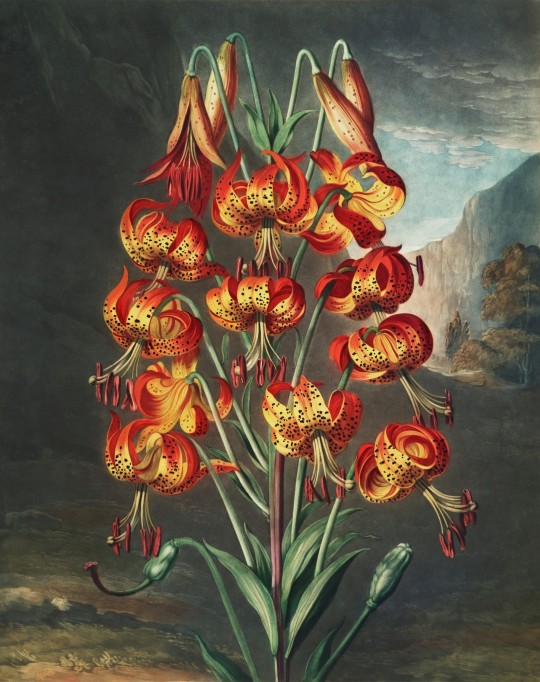
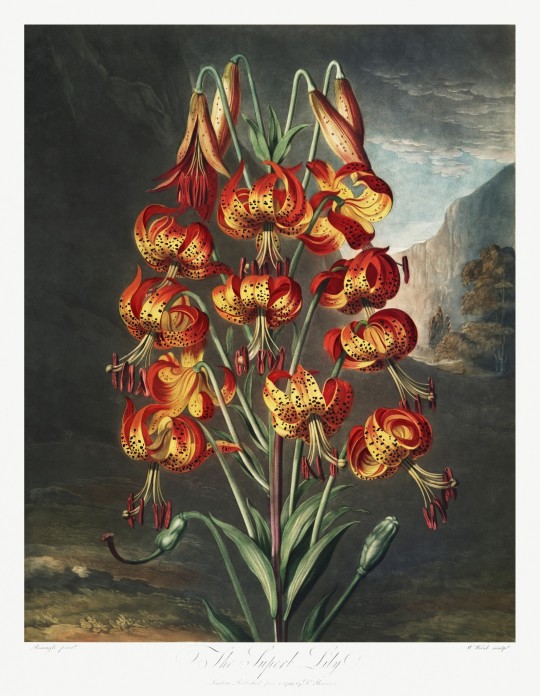
The Superb Lily from The Temple of Flora (1807) by Robert John Thornton. Original from Biodiversity Heritage Library. Digitally enhanced by rawpixel.
51 notes
·
View notes
Video
n246_w1150 by Biodiversity Heritage Library
Via Flickr:
New illustration of the sexual system of Carolus von Linnaeus. London : 1807.. biodiversitylibrary.org/page/307026
#Botany#Pictorial works#Missouri Botanical Garden#Peter H. Raven Library#bhl:page=307026#dc:identifier=http://biodiversitylibrary.org/page/307026#Robert John Thornton#M.D.#Temple of Flora#Garden of Nature#artist:name=Philip Reinagle#artist:viaf=26991550#flowers#passion flowers#taxonomy:binomial=Passiflora cerulea#taxonomy:binomial=Passiflora caerulea#taxonomy:common=Blue Passion Flower#blue flowers#BHLIG#HSA#flickr#passionflower#passionfruit#passion flower#passion fruit#passiflora caerulea#blue passionflower#bluecrown passionflower#common passion flower
7 notes
·
View notes
Text

The Blue Passion-flower, 1799-1807. Robert John Thornton. A Gardener's Notebook. Vintage Botanical.
1 note
·
View note
Text

#Robert John Thornton#art#nature#floral#flower#paintings#dark art#black aesthetic#gloomcore#romantic
11 notes
·
View notes
Text

“The Snowdrop”, a plate from “The Temple of Flora”, the third and final part of Robert John Thornton’s New Illustration of the Sexual System of Carolus von Linnaeus (1807)
0 notes
Text
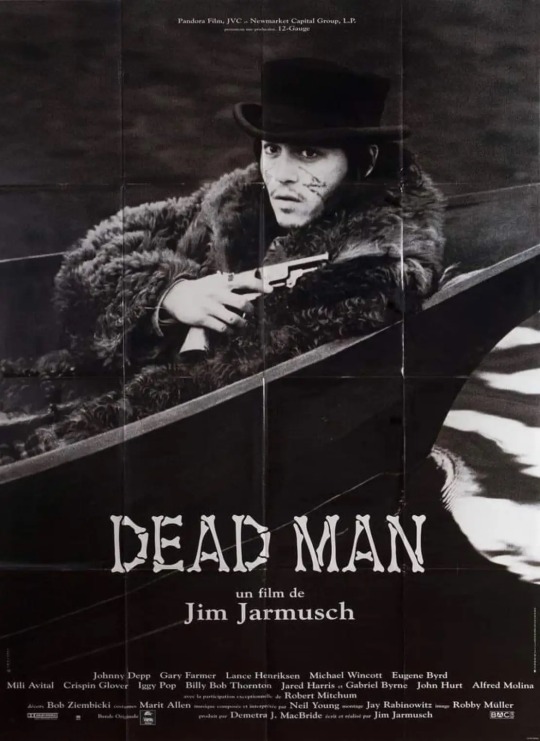
#dead man#jim jarmusch#johnny depp#robert mitchum#iggy pop#neil young#western#monochrome#billy bob thornton#crispin glover#John hurt#gary farmer#jared harris#robby muller#gabriel byrne
57 notes
·
View notes
Text
Platonic communal sleeping in the American colonies
Platonic bed-sharing was actually quite common custom in the colonies, especially during time's of need, after all, space and privacy were a luxury of the wealthy. It didn't necessarily have to be intimate either, it was not uncommon for sometimes even complete strangers - often travelers or soldiers - of the same sex to share a bed together at an Inn if there was little space, and needed room. Samuel Pepys, an 18th century diarist, often slept with male friends and wrote about the conversations they would have at night. [x]
Rotundo also explains that; “It is not too much to suggest that in an era before central heating, the body warmth of an already beloved bedmate may have been so welcome as to be a source of emotional as well as physical pleasure.” And implies that while it was most of the time done out of necessity, it was also oftentimes simply a warming act of affection, romantic or platonic; “This was, after all, a culture that fervently contrasted the secure and cozy warmth of home with the coldness of a cruel and heartless world outside… A bed, when shared with a special person, could become a nest of intimacy, a place of casual touch and confidential talk.” [x]
Additionally, during the days before central heating was truly a common thing (Especially if you weren't royal or wealthy), bedmates were also seen as warmth. Oftentimes servants even slept alongside their mistresses. This was also how many sicknesses would spread, as bedbugs and lice were transported from person to person in the colonial period usually when sharing bunks or close quarters.
Even notable figures took part in this custom, like Robert Troup and Alexander Hamilton, as Chernow writes how the two shared beds while studying law together at King's College; “At King's, Troup wrote, ‘...they occupied the same room and slept in the same bed’” [x]
Which also leads to a humourous story about when John Adams slept with Benjamin Franklin in a New Jersey tavern during the fall of 1776. Just ten days prior, Washington and his men had barely escaped capture on Long Island after a suffering defeat to the British. The Continental Congress had debated for days about what was to be done. The British had captured General John Sullivan during the Battle, Earl Howe and his brother William Howe paroled Sullivan so he could take a message to Congress, as they wanted a talk peace. Eventually, Sullivan went to Philadelphia and spoke to Congress about the peace talks, to which the Congress decided that they would send a three-man committee to Staten Island. Which was composed of; Benjamin Franklin, Edward Rutledge, and Adams. The men represented the northern, middle and southern colonies. The three had set out on September 9th, Franklin and Rutledge each in a two-wheeled chaise, Adams on horseback. Later, the three men arrived in New Brunswick, and unfortunately had found the Inns all too crowded. Which led to Franklin and Adams having to share a tiny room, barely bigger than the bed, without a chimney, in the Indian Queen Tavern. Which then began an interesting debate, as they prepared to retire;
The window was open, and I, who was an invalid and afraid of the air in the night, shut it close. “Oh!” says Franklin, “don't shut the window, we shall be suffocated.” I answered, I was afraid of the evening air. Dr. Franklin replied, “The air within this chamber will soon be, and indeed is now, worse than that without doors. Come, open the window and come to bed, and I will convince you. I believe you are not acquainted with my theory of colds.” Opening the window, and leaping into bed, I said I had read his letters to Dr. Cooper, in which he had advanced, that nobody ever got cold by going into a cold church or any other cold air, but the theory was so little consistent with my experience, that I thought it a paradox. However, I had so much curiosity to hear his reasons that I would run the risk of a cold. The Doctor then began a harangue upon air and cold, and respiration and perspiration, with which I was so much amused that I soon fell asleep, and left him and his philosophy together, but I believe they were equally sound and insensible within a few minutes after me, for the last words I heard were pronounced as if he was more than half asleep. I remember little of the lecture...
Source — The Works of John Adams, Volume 3, by John Adams
Especially during time of war, when the revolution was rough, and means were low. Or as some day; “These are the times that try men's souls”. If the army was running low on space, or even beds, many - if not most - men resorted to sharing the same bed. Although this particular custom was not as accepted by many European visitors who came to the colonies, this cultural difference was often completely condemned by them. Pierre Du Ponceau - an aide of Baron von Steuben's - wrote of a particular dispute between a Virginian and a Frenchman about the subject in his autobiography;
One evening at an Inn in Virginia, a Frenchman and a Virginian were discussing about the manners of their respective countries. The American exclaimed violently against the horrid custom of the French of kissing one another at meeting and parting. The Frenchman made no answer, but as it was late, he took his candle and went up to bed. He was soon followed by the Virginian who after undressing came to take his place in the same bed with his companion “Stop, Sir,” said the Frenchman, “that won't do—I shall kiss you as much as you please, but by Jupiter, I'll not sleep with you.”
Source — Autobiographical Letters Of Peter S. Duponceau
It seems like this custom was almost exclusively English/Colonial, as David Montagu Erskine wrote to his father in 1799 of the living arrangements he and his companions encountered among the transient inhabitants of Washington, DC;
Each of us have a bed room to ourselves, if we chuse, but people in this country seem to think so lightly of such an indispensable comfort as I consider it, that I believe there are but three of us, who have rooms to ourselves.
Source — Menk, Patricia Holbert. “D. M. Erskine: Letters from America, 1798-1799.” The William and Mary Quarterly, Volume 6.
Edward Thornton, secretary to the new British minister to the United States, wrote to his former employer in 1792;
Mr. Hammond's rank may possibly secure him from some of the inconveniences, which others, rendered fastidious by the style of travelling in England, are loud in their complaints of, such as [...] fellow lodgers in the same room and not infrequently in the same bed.
Source — Jackman, S. W. “A Young Englishman Reports on the New Nation: Edward Thornton to James Bland Burges, 1791-1793.” The William and Mary Quarterly, Volume 18
This custom was even common after the revolution and the war of 1812—As Lieutenant John Le Couteur, a British army officer from the Isle of Jersey, traveled through New York in 1816 accompanied by Captain George Thew Burke. Le Couteur and Burke arrived at an Inn one day after dinner had been served and cleared, and they were hard-pressed to convince the hostess to bring out more food, “But this was not the last grievance.” Le Couteur recorded in his diary and concluded;
There was only one spare bed, a small one, which of course I insisted Burke should take. The Yankee Landlord wished me to take half of it as a matter of course but I said: “we Britishers were particular on that pint.’ “Then,” said mine host, “I guess if you don’t chuse to take half a bed with some one, you’ll jist sleep in a cheer [chair] or by the kitchen fire’
Source — Male-Male Intimacy in Early America: Beyond Romantic Friendships, by William E Benemann
#amrev#american history#american revolution#war of 1812#alexander hamilton#historical alexander hamilton#robert troup#john adams#benjamin franklin#john le couteur#george thew burke#pierre etienne du ponceau#peter stephen du ponceau#david montagu erskine#edward thornton#history#cicero's history lessons#18th century
72 notes
·
View notes
Photo

Jim Jarmusch’s “Dead Man” May 16, 1995.
#Jim Jarmusch#Dead Man#1995#1996#Nineties#Western#Drama#Period Drama#Action & Adventure#Johnny Depp#Gary Farmer#Robert Mitchum#Billy Bob Thornton#Iggy Pop#Gabriel Byrne#Alfred Molina#John Hurt#Jared Harris#Neil Young#4/5
36 notes
·
View notes
Text

Robert John Thornton, publisher (British, 1768-1837). Large Flowering Sensitive Plant from Temple of Flora, 1799-1807. Engraving with hand coloring.
2 notes
·
View notes
Text
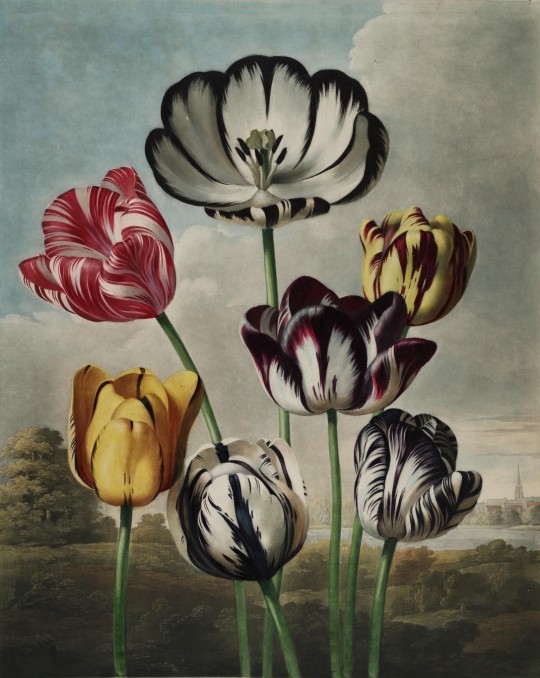
Tulips
SciArt by Philip Reinagle for Robert John Thornton, Temple of Flora (1807).
View more in the Biodiversity Heritage Library (@biodivlibrary) with thanks to the Peter H. Raven Library of the Missouri Botanical Garden (@mobotgarden) for digitizing.
#bhlib#histsciart#sciart#naturalhistory#biodiversity heritage library#flowers#Missouri Botanical Garden#flowercore#tulips
128 notes
·
View notes
Photo
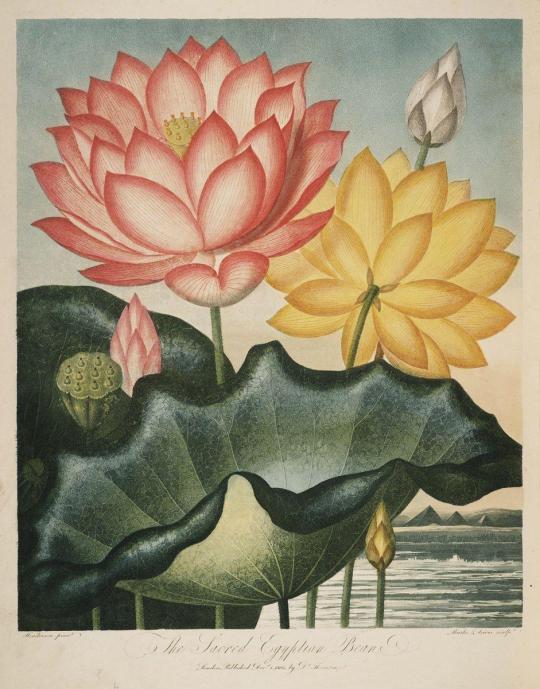
Sacred Egyptian Bean — one of the many exquisite illustrative plates to be found in Robert John Thornton's "The Temple of Flora" (1807).
Read more in our Martin Kemp essay here: https://publicdomainreview.org/essay/sex-and-science-in-robert-thornton-s-temple-of-flora
And see our Temple of Flora prints for sale here: https://publicdomainreview.org/essay/sex-and-science-in-robert-thornton-s-temple-of-flora
62 notes
·
View notes
Video
n351_w1150 by Biodiversity Heritage Library
Via Flickr:
New illustration of the sexual system of Carolus von Linnaeus. London : 1807.. biodiversitylibrary.org/page/307131
#Botany#Pictorial works#Missouri Botanical Garden#Peter H. Raven Library#bhl:page=307131#dc:identifier=http://biodiversitylibrary.org/page/307131#carnivorous plants#artist:viaf=26991550#Virginia#Robert John Thornton#M.D.#green flowers#flowers#HistSciArt#Temple of Flora#Garden of Nature#flickr#philip reinagle#sarracenia flava#Yellow pitcher plant#pitcher plant#botanical illustration#scientific illustration
1 note
·
View note
Text
So I looked it up, because of course the Holmes books aren't alone to enter the public domain this year, and Metropolis has too. So here's the list I found of creative works that are now public domain:
Books
— The Gangs of New York, by Herbert Asbury (original publication)
— Death Comes for the Archbishop, by Willa Cather
— The Big Four, by Agatha Christie
— The Tower Treasure, the first Hardy Boys mystery by the pseudonymous Franklin W. Dixon
— The Case-Book of Sherlock Holmes, by Arthur Conan Doyle
— Copper Sun, by Countee Cullen
— Mosquitoes, by William Faulkner
— Men Without Women, by Ernest Hemingway
— Der Steppenwolf, by Herman Hesse (in German)
— Amerika, by Franz Kafka (in German)
— Now We Are Six, by A.A. Milne with illustrations from E.H. Shepard
— Le Temps retrouvé, by Marcel Proust (in French)
— Twilight Sleep, by Edith Wharton
— The Bridge of San Luis Rey, by Thornton Wilder
— To The Lighthouse, by Virginia Woolf
Movies
— "7th Heaven," directed by Frank Borzage
— "The Battle of the Century," a Laurel and Hardy film directed by Clyde Bruckman
— "The Kid Brother," directed by Ted Wilde
— "The Jazz Singer," directed by Alan Crosland
— "The Lodger: A Story of the London Fog," directed by Alfred Hitchcock
— "Metropolis," directed by Fritz Lang
— "Sunrise," directed by F.W. Murnau
— "Upstream," directed by John Ford
— "Wings," directed by William A. Wellman
Musical compositions
— "Back Water Blues," "Preaching the Blues" and "Foolish Man Blues" (Bessie Smith)
— "The Best Things in Life Are Free," from the musical "Good News" (George Gard "Buddy" De Sylva, Lew Brown, Ray Henderson)
— "Billy Goat Stomp," "Hyena Stomp" and "Jungle Blues" (Ferdinand Joseph Morton)
— "Black and Tan Fantasy" and "East St. Louis Toodle-O" (Bub Miley, Duke Ellington)
— "Can't Help Lovin' Dat Man" and "Ol' Man River," from the musical "Show Boat" (Oscar Hammerstein II, Jerome Kern)
— "Diane" (Erno Rapee, Lew Pollack)
— "Funny Face" and "'S Wonderful," from the musical "Funny Face" (Ira and George Gershwin)
— "(I Scream You Scream, We All Scream for) Ice Cream" (Howard Johnson, Billy Moll, Robert A. King)
— "Mississippi Mud" (Harry Barris, James Cavanaugh)
— "My Blue Heaven" (George Whiting, Walter Donaldson)
— "Potato Head Blues" and "Gully Low Blues" (Louis Armstrong)
— "Puttin' on the Ritz" (Irving Berlin)
— "Rusty Pail Blues," "Sloppy Water Blues" and "Soothin' Syrup Stomp" (Thomas Waller)
Source: https://www.voanews.com/a/public-domain-debuts-include-last-sherlock-holmes-work-/6898309.html
733 notes
·
View notes
